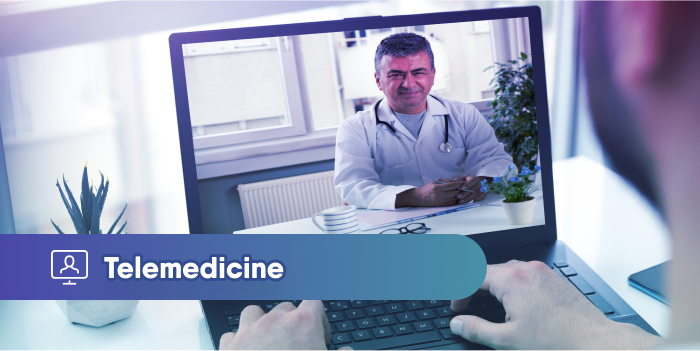Specialist Telemedicine Reviews: Trick Insights into Modern Virtual Healthcare
Embracing Telemedicine: Changing Health Care Distribution for a Modern Globe
As we browse an era defined by quick digitalization and developing patient demands, the integration of telemedicine right into typical healthcare methods provides an engaging proposition. In checking out the effects and intricacies of accepting telemedicine, a nuanced understanding of its complex impact on health care distribution in the modern-day globe becomes necessary.
The Development of Telemedicine
Telemedicine has actually undertaken substantial advancement over the past few decades, transforming the landscape of health care shipment. At first developed to bridge the gap between doctor and individuals in remote areas, telemedicine has now expanded its reach to offer a wide array of clinical solutions through technical innovations.
In the very early phases, telemedicine largely included appointments by means of telephone or video clip conferencing. With the spreading of digital devices and platforms, health care experts can now from another location keep track of vital indications, conduct virtual examinations, and also carry out particular medical treatments. This shift towards more thorough online treatment has changed the method healthcare is supplied, making it much more accessible and practical for patients.
Moreover, the integration of electronic wellness records (EHRs) and telemedicine has actually boosted sychronisation amongst healthcare groups, bring about much more reliable and collaborative client treatment. Telemedicine reviews. With the recurring developments in expert system and remote tracking devices, telemedicine is poised to proceed evolving, providing cutting-edge remedies to enhance health care results worldwide

Benefits of Telemedicine Adoption
As the usage of telemedicine has actually increased to include a broader range of technical capacities and clinical solutions, the benefits of its fostering in modern-day health care distribution have actually ended up being significantly apparent. Among the primary advantages of telemedicine is raised access to health care solutions, particularly for individuals in underserved or remote areas. Patients can currently speak with doctor without the requirement for extensive traveling, reducing both time and price obstacles. Additionally, telemedicine improves comfort for people by enabling them to schedule appointments at times that fit their timetables, advertising better adherence to therapy plans.
Additionally, telemedicine can bring about better wellness end results via boosted treatment sychronisation. With the capability to quickly share clinical documents and collaborate with specialists, doctor can use even more thorough and prompt treatment. This streamlined approach can cause faster medical diagnoses, decreased healthcare facility admissions, and far better monitoring of chronic conditions. Furthermore, telemedicine can aid ease stress on standard healthcare systems by lowering congestion in centers and healthcare facilities, ultimately boosting general efficiency and person fulfillment.
Conquering Telemedicine Challenges
Attending to the barriers inherent in integrating telemedicine into existing medical care systems presents a vital yet surmountable obstacle for doctor worldwide. One major obstacle is the resistance to change amongst both medical care specialists and patients. Convincing traditional healthcare suppliers to take on telemedicine requires comprehensive training programs and continuous support to guarantee seamless integration. Additionally, individuals might be hesitant to accept virtual assessments because of worries regarding the high quality of care or an absence of article source knowledge with the modern technology.
Additionally, governing barriers and repayment restrictions posture considerable challenges to the prevalent implementation of telemedicine. Numerous state and country laws regarding telemedicine practices develop a complex environment for service providers to navigate. Repayment plans that do not adequately make up for telemedicine solutions can hinder health care organizations from spending in this cutting-edge technique to care delivery.

Enhancing Patient-Provider Communication
Browsing the landscape of telemedicine challenges brightens the important need for boosting patient-provider communication in contemporary healthcare distribution systems - Telemedicine reviews. Effective communication exists at the heart of quality healthcare provision, and in the realm of telemedicine, where physical signs may be limited, empathetic and clear communication becomes also more critical
Enhancing patient-provider interaction in telemedicine entails numerous methods. Offering clear directions, setting realistic expectations, and ensuring open lines of interaction for follow-up questions can improve the overall patient experience in telemedicine.
Future Trends in Telemedicine
Expecting the development of telemedicine, developments in technology and medical care shipment systems are leading the way for cutting-edge approaches to person care. One of the future trends in telemedicine is the integration of fabricated knowledge (AI) and maker understanding formulas to boost analysis capabilities. AI can evaluate vast quantities of individual data swiftly, assisting healthcare suppliers in making extra precise diagnoses and treatment choices. Furthermore, the use of online reality (VIRTUAL REALITY) and augmented truth (AR) in telemedicine is getting momentum. These innovations can produce immersive experiences for both people and carriers, assisting in virtual consultations and clinical training simulations.
By leveraging telemedicine, healthcare service providers can reach clients in remote places, boosting access to top quality treatment. These improvements in telemedicine hold excellent promise for changing health care delivery and improving person end results in the future.
Final Thought
Finally, telemedicine has actually reinvented health care delivery by enhancing accessibility to care, increasing efficiency, and find more information enhancing client results. In spite of challenges, the benefits of telemedicine fostering are clear, leading the way for much better patient-provider interaction and future improvements in health care. As innovation remains to evolve, telemedicine will certainly play a critical duty in changing health care distribution for a contemporary globe.

Expecting the evolution of telemedicine, improvements in innovation and healthcare distribution systems are paving the means for innovative techniques to individual care. These improvements in telemedicine hold terrific pledge for changing healthcare shipment and improving individual outcomes in the future.
In verdict, telemedicine has transformed healthcare shipment by enhancing access to care, boosting performance, and improving client end results.